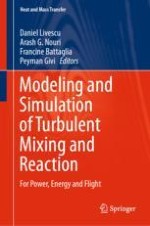2020 | Buch
Modeling and Simulation of Turbulent Mixing and Reaction
For Power, Energy and Flight
herausgegeben von: Dr. Daniel Livescu, Dr. Arash G. Nouri, Prof. Dr. Francine Battaglia, Prof. Dr. Peyman Givi
Verlag: Springer Singapore
Buchreihe : Heat and Mass Transfer
